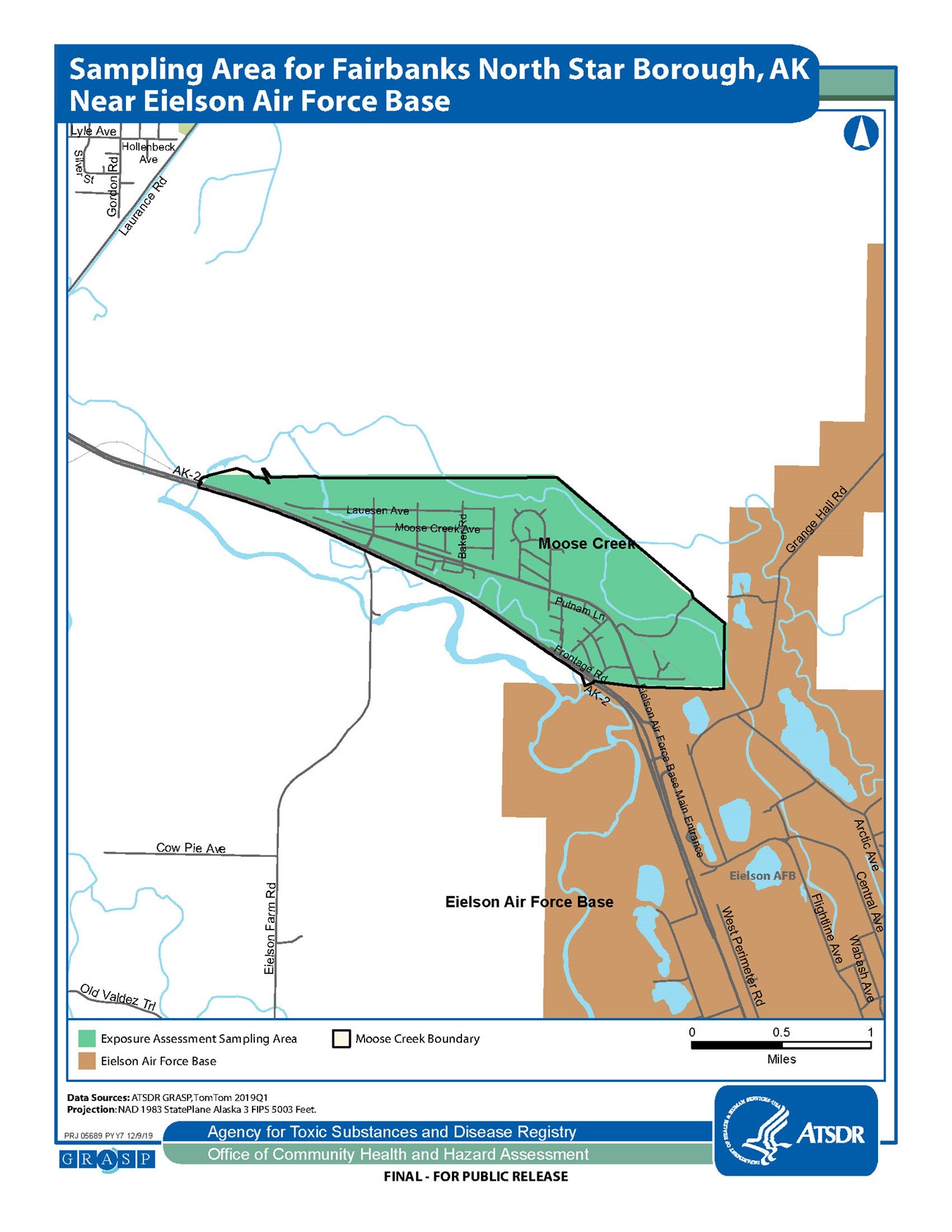At a glance
In 2019, the Centers for Disease Control and Prevention (CDC) and the Agency for Toxic Substances and Disease Registry (ATSDR) started exposure assessments (EAs) in communities near current or former military bases known to have had per- and polyfluoroalkyl substances (PFAS) in their drinking water.

Information to protect our communities
Individuals who participated in the EAs provided blood and urine samples to CDC/ATSDR for analysis. We sent letters to participants with their individual lab results. See the sample letter of test results.
Additional information is also being reviewed to better understand the community's exposure. This includes age and location. Once our full analysis is complete, CDC/ATSDR will host an in-person community meeting to share our findings and recommendations.
The assessment focused on the area of Moose Creek, AK, near Eielson Air Force Base. For more information, refer to the map of the sampling area.

PFAS levels in blood
Did you know?
The lab tested participants' blood for seven different PFAS. PFAS levels are measured in micrograms per liter (µg/L).
CDC/ATSDR compared PFAS levels in participants' blood across the community to the average levels found in the U.S. population. Three PFAS (PFHxS, PFOA, and PFOS) were detected above national averages. The levels of PFNA, PFDA, MeFOSAA, and PFUnA were similar to national averages.


PFAS levels in blood compared to other studies**




Other PFAS levels
Urine
Most participants provided a urine sample; approximately 10% of the samples were analyzed. Averages were not calculated because no PFAS were detected in urine samples.
Tap water
CDC/ATSDR collected and tested tap water samples from 14 participating households. PFAS levels for all 14 samples were below all federal and applicable state guidelines for PFAS in drinking water.
PFAS levels from two untreated wells not used for drinking water were tested. Both were above the EPA lifetime health advisory for PFOA and PFOS combined.
Dust
CDC/ATSDR collected and analyzed indoor dust samples from 14 locations. CDC/ATSDR is evaluating the dust sample results and will have more information in the final report.
About the results
For more information
Visit www.atsdr.cdc.gov/pfas or contact:
Rhonda Kaetzel, PhD, DABT Regional Director ATSDR Region 10
rkaetzel@cdc.gov or 206-553-0530
We are also reaching out to doctors, nurses, and other health care providers in the Fairbanks North Star Borough to provide PFAS information.
- https://www.tandfoline.com/doi/pdf/10.1080/15426110308984859?needAccess=true
- CDC/ATSDR 2020
- https://www.atsdr.cdc.gov/HAC/pha/Decatur/Perfluorochemical_Serum%20Sampling.pdf
- National Exposure Report Home Page | NER | CDC
- https://ehp.niehs.nih.gov/doi/pdf/10.1289/ehp.0800379
- https://health.pa.gov/topics/Documents/Environmental%20Health/PEATT%20Pilot%20Project%20Final%20Report%20April%2029%202019.pdf
- https://dhhs.nh.gov/dphs/documents/pease-pfc-blood-testing.pdf
- https://www.health.ny.gov/environmental/investigations/drinkingwaterresponse/docs/westhampton_quogue_group_level_blood_testing

